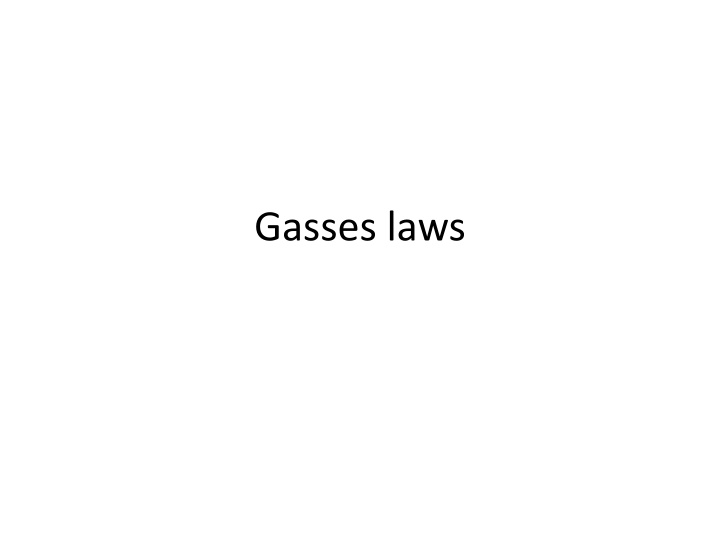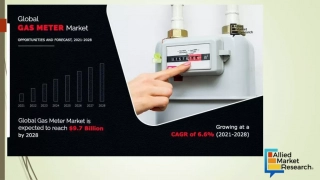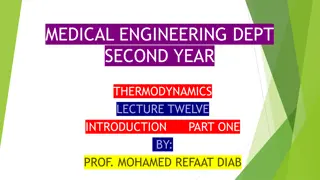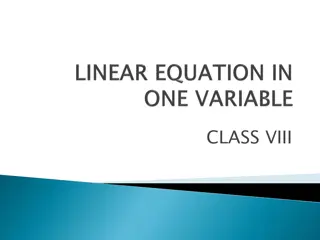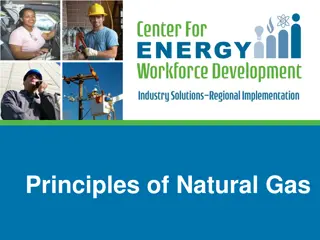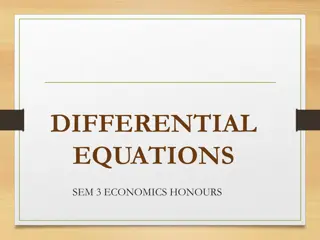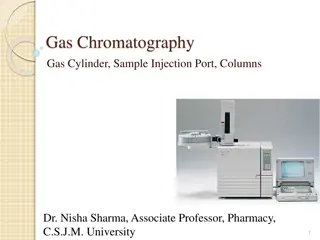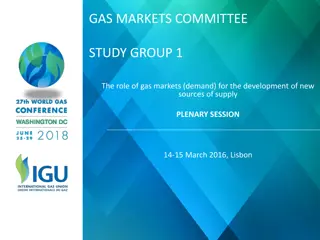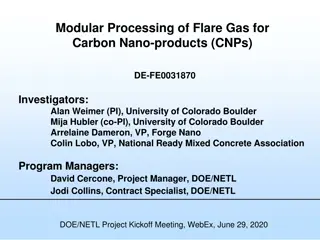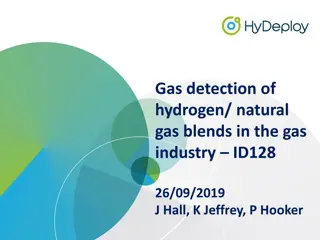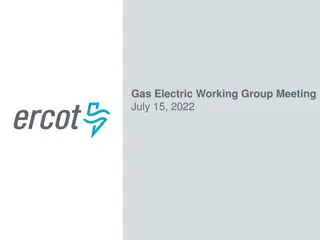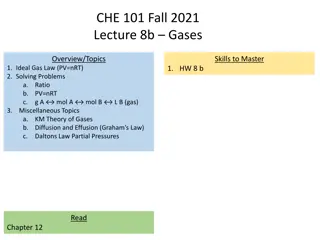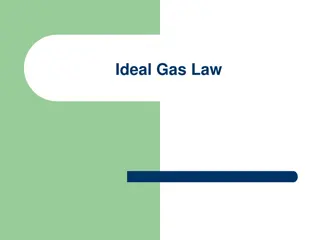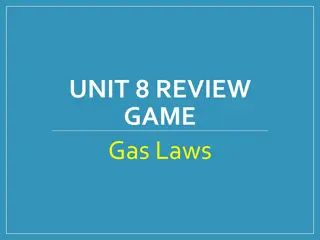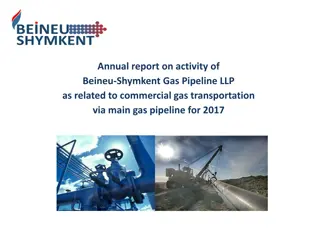Gas Laws and Equations Overview
Covering Boyle's Law, Charles' Law, Gay-Lussac's Law, and the general gas equation, this summary explains the fundamental principles governing the behavior of gases. Explore how pressure, volume, temperature, and constant factors interact in closed systems, providing insights into gas properties and their applications, like in pressure cookers for cooking food faster.
Download Presentation

Please find below an Image/Link to download the presentation.
The content on the website is provided AS IS for your information and personal use only. It may not be sold, licensed, or shared on other websites without obtaining consent from the author.If you encounter any issues during the download, it is possible that the publisher has removed the file from their server.
You are allowed to download the files provided on this website for personal or commercial use, subject to the condition that they are used lawfully. All files are the property of their respective owners.
The content on the website is provided AS IS for your information and personal use only. It may not be sold, licensed, or shared on other websites without obtaining consent from the author.
E N D
Presentation Transcript
Boyle's law Boyle observed that volume of a given mass of a real gas is inversely proportional to its pressure at constant temperature and in a closed system. In another form, product of pressure and volume of a given mass of a gas is constant , at constant temperature. P V = C where C is constant P1V1= P2V2 ------------ (1)
Charles law Charles said that for a real gas in a closed system volume of proportional to its absolute temperature at constant pressure. V ? a gas is directly ? ?= k ?1 ?1= where k is constant ?2 ?2 ?1 ?2= ?1 ?2 ??
Gay-lusaac`s law For a given mass and constant volume of an ideal gas, the pressure exerted on the container sides is directly proportional to its absolute temperature. P T ?2 ? ?= Z where Z is constant. i.e., ?1 ?2=?1
Gay-lusaac`s law 1 atm = 760 torr (conversion equation)
Application of Gay-lusaac`s law As the temperature of the liquid water is increased, water vapour is produced. The pressure of the water vapour keeps rising until the temperature of the water reach 100 C and the water vapour exceed the normal boiling point of water. At this higher temperature food can be cooked much faster. Tough meat also will be much more tender after being cooked in a pressure cooker.
the general equation We can combine the previous laws in one equation: PV= n R T N is number of moles R is the general gasses constant. This equation is for ideal gas not for real gas because this equation assumed the molecules of gas as points and there are no forces among molecules, i. e., motion is elastic.
Real equation Van der walls solved the problem by adding two terms: He add (-b) to the volume to become (v-b) assuming molecule has a volume and add the term a/2v to pressure to become (p + a/v2 ) considering attractive forces between molecules. The equation became: (v-b) (p+ a/v2) =nRT P = ?2 Where a , b are constants. This equation is called equation of state. ?? ? ?- ?
